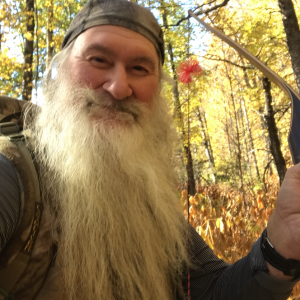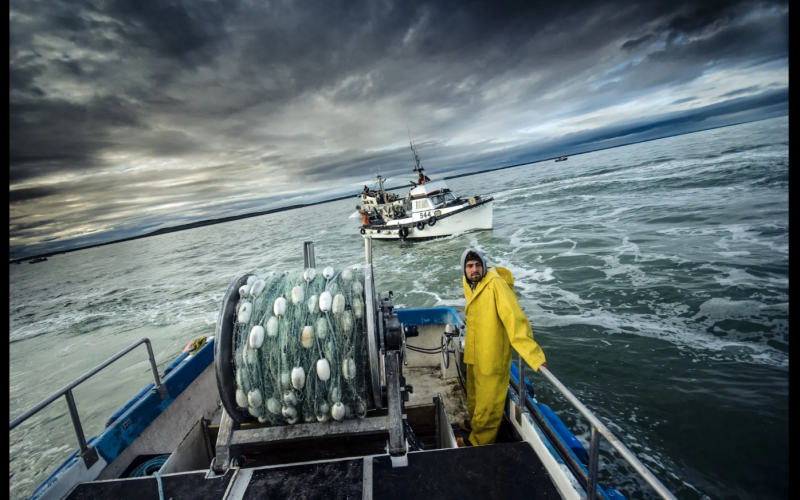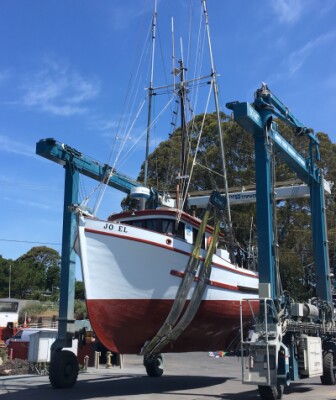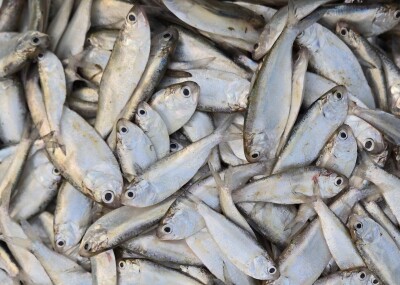Last year’s lower-than-average Bristol Bay salmon harvest likely went a long way toward long-term polarization of the drift fleet between fishermen earning the highest and lowest revenues. As a trend, drift fishermen with the highest production in the fleet typically made double the earnings of fishermen with the lowest production.
More recently, however, a dwindling number of top producers have been earning five times more money than fishermen at the bottom of the scale, A more dispiriting trend is how an increasing number of fishermen are falling from the middle into the bottom tier when it comes to their seasonal earnings.
“The Bristol Bay fishermen we’ve spoken with seem to have done very well or very poorly, with not much in the middle,” says Sharon Lechner, president and CEO of the Commercial Fishing and Agriculture Bank (CFAB) in Anchorage.
For those not familiar with fisheries economic tools, the State of Alaska’s Commercial Fisheries Entry Commission (CFEC) keeps tabs on earnings in many state-sanctioned fisheries including salmon via data sets known as quartile tables. The tables break out the number of permit holders comprising the top 25 percent, the upper and lower middle 50 percentiles and the lowest 25 percent of the season’s revenues.
Data for the 2024 season won’t be released until later this year, but a snapshot of that data shows that from 2000 to 2023 the number of permit holders in the lowest quartile have grown from a low of around 660 to more than 800.
During the same period, the number of fishermen in the top quartile have dwindled from 249 to 144. The number of fishermen whose earnings fall between the 50th and 75th quartiles declined from 272 to 227, and the lower 50th percentile dropped from 369 to 324.
While the average earnings per drift net permit for 2023 (for all quartiles and a total fleet of 1,428 permit holders) crunch out to $105,030 for the season, the 144 permit holders in the top 25th percentile averaged $260,209 while 733 fishermen – more than half the fleet in the bottom 25 percent – averaged $51,185.
As for the 2024 season, the rebound in average ex-vessel prices, up from a base price of 50 cents in 2023 to 80 cents in 2024, helped offset the shortfall in production and drove the value for all salmon species in the bay to $128.1 million for a gain over the $117 million of 2023. But much of the Bay’s successful seasons have been tied to the 20-year average harvest value of $193.4 million or more.
In years of greater sockeye abundance, higher ex-vessel prices – or both – fishermen in the bottom quartile go home with closer to a hundred grand in their pockets. That’s minus the money paid out for crew shares, rising costs in insurance, boat payments, mechanical breakdowns, nets, seasonal startup costs, and food and fuel expenses.
In 2022, the stars aligned for fishermen in terms of ex-vessel prices averaging $1.46 per pound and a harvest of around 300 million pounds for fleet revenues of $351 million. Highliners, 162 of them, averaged $538,000. The second quartile was comprised of 253 permit holders for average revenues of $344,759 and third quartile with 349 permit holders averaged $249,702. Meanwhile, the 829 permit holders in the bottom bracket accounted for more than 52 percent of the fleet and posted revenues of $105,102, which was double of what they made in 2023.
Economic drivers
Theories abound in the factors driving economic disparities within the fleet. They range from the immediate dynamics of last year’s season to the perfunctory assessment that the Bristol Bay fishery has followed a traditional pattern in the evolution of business.
Unlike agriculture and other industries, in which the revenue-polarizing process relies upon aggregating resources (using big farm profits to purchase more crop lands from smaller farmers) or aggregating access rights to a finite pool of resources ( as in buying up more transferable halibut and blackcod IFQ shares), the limited entry permits were designed to allow equal commercial access to the salmon.
Last year’s predominant return of smaller, 4.5-pound fish caught many fishermen off guard. Those who fished gill nets with the traditional mesh size of 5-1/8 inch or larger to target 5.5-pound fish were dismayed at the number of fish passing cleanly through their nets and getting caught by fishermen using a mesh size less than 5 inches.
“We’ve heard that with much smaller fish in 2024, mesh size was an issue,” says CFAB’s Lechner. “However, many fishermen couldn’t justify the cost of new (smaller mesh sized) gear with dock prices down, insurance and other expenses up and their profit margins shrinking.”
What Lechner has been hearing from her position on the finance side of the industry speaks to a compounded list of conditions that may be sucking the majority of fleet toward the bottom quartile. Though fishermen at the top of the earning spectrum incur the same expenses and may be operating at similar margins of profitability, their economy of scale over the years has enabled them to make their payments and enhance their operations—in good seasons and in bad.
“You end up with a class of super-efficient permit holders who know how to fish and have had a long period of time in which to reinvest in their vessels and their gear,” says Reid Johnson, research and planning section supervisor at CFEC, in Juneau. “These incremental advantages add up over time.”
Adding recirculating seawater (RSW) systems, beefing up hydraulic systems, repowering boats with new engines, hanging extra nets of varying mesh sizes to match the size of fish often portend of higher production. As added incentives, some processors have offered financing for new boats and paid out incremental post-season production bonuses among their highliners.
In addition to theories about who’s catching the most fish, permit stacking (fishing two permits from the same vessel) can skew the data that goes into the quartile tables, depending upon which permit number is tied to specific deliveries. By some estimates, about 400 of the permits are tied up in the stacking arrangement.
Though confidentiality within CFEC data makes it impossible to determine whether fishermen in the top percentile are the same people each season, many of their characteristics remain consistent through the years.
“The more aggressive fishermen who fish the line, switch districts to follow the fish, don’t miss an opener, fish late into the season to take advantage of late-season price increases, and have the boat and gear to chase the fish seem to do better, on average,” says Lechner.
From a financier’s perspective, however, it’s the folks who hold loans and put in $50,000 seasons that demand intervention, and a substantial portion of the fleet lies trapped in a quandary between staying in the game or getting out.
“Many fishermen seem hesitant on selling out until the market improves and they can get something closer to what they’ve put in,” she says.
Easing debt loads
“While it was probably too late for the reduced interest rates to have much of an impact for the 2024 season, it certainly will on a go-forward basis,” says Lechner. “Most lenders seem to be mindful of the challenges at play and appear to be working with their borrowers.”
Lechner adds that waving late fees, splitting single large payments into smaller partial payments so that they can be paid by fishermen working other jobs have been among solutions so far. Some cases may require formal extensions or restructuring entire loan packages.
At the same time that an appreciable portion of the drift fleet faces financial duress, permit values have taken a corresponding dip. To some with capital reserves and/or financial backing it may be time to buy into the fishery. In the preamble of the Bristol Bay salmon season in 2022 drift permits hit a peak of $260,000. In 2023, they had dropped to half at $130,000. Going into the 2024 season a sale of $128,000 marked the lowest trading price with Alaska Boats and Permits, in Homer. Following last year’s season, the first sale price was $121,500, according to Maddie Lightsey, a broker with Alaska Boats and Permits.
“Our most recent sale was $127,650, though, so it looks as if the low hanging fruit might be gone,” she wrote in an e-mail to NF in September.
In December one permit sold for the asking price of $142,500. On January 11 another sold for the asking price of $143,000 and on January 22 another sold for the asking price of $150,000.
Meanwhile, the 2025 preseason forecast with ADF&G calls for a total run of 51 million sockeyes with a harvest of around 35 million. Within the incoming batch of salmon 28 percent have been projected to return as 1.2’s, which means the salmon have spent a year in freshwater and two years at sea. Those fish are smaller than 1.3’s (projected at 59 percent of the run) and 2.2’s (9 percent of the run), may weigh in at less than 5 pounds and warrant a smaller mesh size in nets to catch them.
But if you ask Tims Sands, area management biologist with ADF&G in Dillingham, a 5.3-pound average for 2025 “is a safe bet.”
Some caveats, though.
“There are a lot of variables,” says Sands. “If you have a larger mesh size you might miss a bunch of the one twos. The one twos are always going to be smaller.”
Though Sands won’t comment on mesh size as it applies to catching fish of a particular size or age class he’s observed an array of tactics by fishermen throughout the bay.
“Have options available,” he recommends. “Look at how fish are being caught, and if you’re not catching them change your mesh size.”







